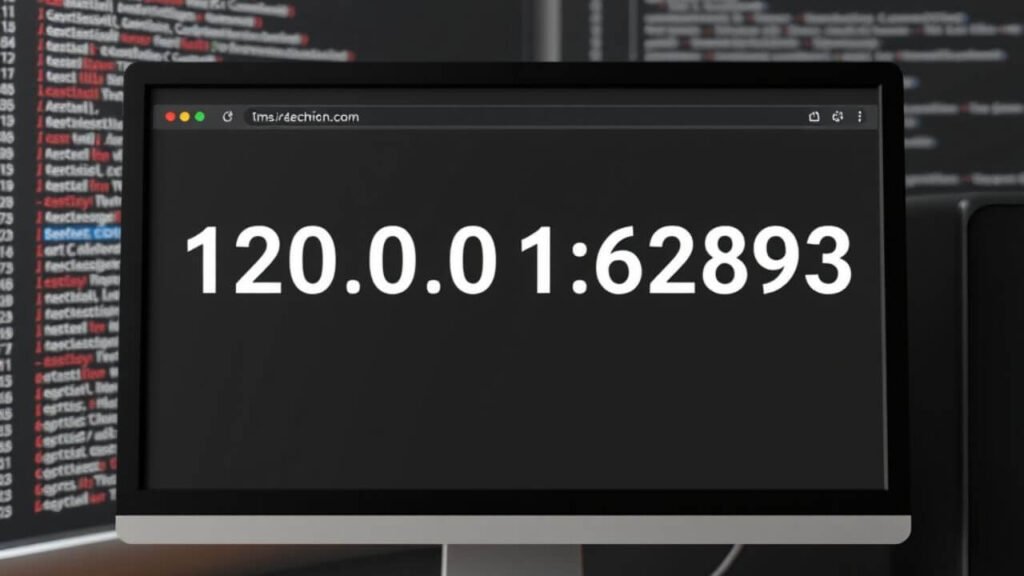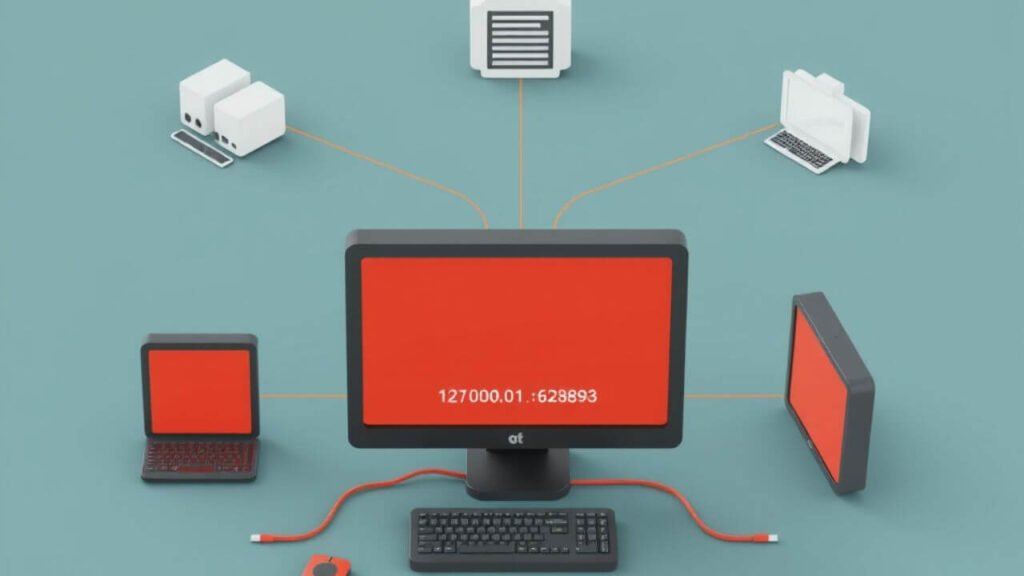In the world of networking and software development, IP addresses and ports play crucial roles in enabling communication between devices and applications. One particular combination that frequently appears in local testing and development environments is 127.0.0.1:62893. This loopback address and dynamic port pairing is commonly used for running and testing web servers, APIs, and other software locally. In this blog post, we will explore what 127.0.0.1:62893 represents, how it’s typically used in development scenarios, and the important security considerations it involves. Whether you’re a developer, system administrator, or just a curious tech enthusiast, this guide will clarify everything you need to know about 127.0.0.1:62893 and its role in local network operations.
Understanding IP Addressing

What Is an IP Address?
An IP (Internet Protocol) address is a unique identifier assigned to each device connected to a network. It allows devices to communicate with one another over the internet or a local network. There are two versions of IP addresses in use today: IPv4 and IPv6.
IPv4 addresses look like this: 192.168.1.1 or 127.0.0.1, consisting of four octets separated by periods. IPv6 addresses are longer and designed to solve IPv4’s limitations.
The Role of 127.0.0.1
The IP address 127.0.0.1 is known as the “loopback” address. It refers to the local machine, meaning any traffic sent to 127.0.0.1 doesn’t leave the device. Instead, it loops back to the same device. Developers use this for testing applications locally before deploying them to production.
Ports and Their Importance
What Is a Port Number?
A port is a virtual point where network connections start and end. When data is sent over the internet or a local network, it’s directed to a specific port number on a device. Ports ensure that incoming and outgoing data is routed to the correct applications.
Port numbers range from 0 to 65535 and are divided into three categories:
- Well-known ports (0–1023): Used by common protocols (e.g., HTTP uses 80, HTTPS uses 443).
- Registered ports (1024–49151): Assigned to specific services by IANA.
- Dynamic or private ports (49152–65535): Used by applications for temporary communication.
What Does Port 62893 Represent?
Port 62893 falls into the dynamic/private range. It’s not assigned to any particular service by default, which makes it ideal for temporary or internal use. When an application on your local machine needs to communicate via a socket, the operating system often assigns a random port like 62893 to handle that task.
The Meaning of 127.0.0.1:62893
When you see something like 127.0.0.1:62893, it’s a combination of the loopback IP address and a dynamically assigned port. This typically means:
- The application is running on your local machine.
- It’s listening for or sending data through port
62893. - Communication is restricted to the local environment and won’t reach external networks.
Developers often encounter such combinations during local testing of web servers, APIs, or databases.
Real-World Use Cases

Local Web Development
Web developers commonly use 127.0.0.1 and a random port to test applications before launching them publicly. For example, starting a development server for a React app may output something like:
Server running at http://127.0.0.1:62893This URL lets the developer test functionality without exposing it to the internet.
Debugging and Logs
Software logs often contain addresses like 127.0.0.1:62893 to indicate local traffic activity. This helps in troubleshooting and debugging issues without external interference.
Database Connections
Databases like MySQL or PostgreSQL are sometimes configured to listen only on 127.0.0.1 to restrict access to local users. Dynamic ports can also be used in temporary or containerized environments.
Security Implications
Is It Safe to Use 127.0.0.1?
Yes, using 127.0.0.1 is generally safe because it confines traffic to the local machine. No external device can directly access services bound to this address.
Potential Risks with Dynamic Ports
While the loopback address is safe, the applications using dynamic ports could still pose risks if they:
- Open more ports unintentionally.
- Misconfigure firewall rules.
- Leave debugging interfaces exposed.
Best Practices for Security
- Use firewalls: Ensure that only necessary ports are open.
- Restrict access: Bind sensitive services to
127.0.0.1to avoid external exposure. - Close unused ports: Terminate applications that are no longer in use.
- Use secure connections: Even on localhost, using HTTPS or secure socket connections can help during development.
FAQs
Q.1 Why am I seeing 127.0.0.1:62893 in my browser or logs?
This usually indicates that a local application is running on port 62893 of your machine. It may be a development server, test database, or internal API endpoint.
Q.2 Can someone hack me through 127.0.0.1:62893?
Not directly. Since 127.0.0.1 is only accessible from your machine, external attackers cannot reach it. However, if your machine is compromised or misconfigured, local applications could still be exploited.
Q.3 How do I check what’s running on 127.0.0.1:62893?
You can use command-line tools:
- Windows:
netstat -ano | findstr :62893 - Linux/macOS:
lsof -i :62893ornetstat -an | grep 62893
Q.4 Can I change the port from 62893 to something else?
Yes. Most development servers or applications allow you to specify a custom port in their configuration files or startup commands.
Conclusion
Understanding what 127.0.0.1:62893 means is fundamental for anyone working with local development environments or network configurations. It’s simply a reference to a local application running on a specific, dynamically assigned port. While it poses minimal security risk by itself, it’s crucial to follow best practices to keep your local environment secure. By properly managing your IP bindings and port usage, you can ensure a safe and efficient development workflow.
If you’re working with local ports and testing environments, it’s also important to understand how software handles these connections behind the scenes. Check out our in-depth full overview of QUGAFAIKLE5.7.2 Software—a robust tool designed for secure internal communication, efficient port management, and reliable localhost testing. It’s especially useful for developers who need advanced control over loopback processes and dynamic port allocation.